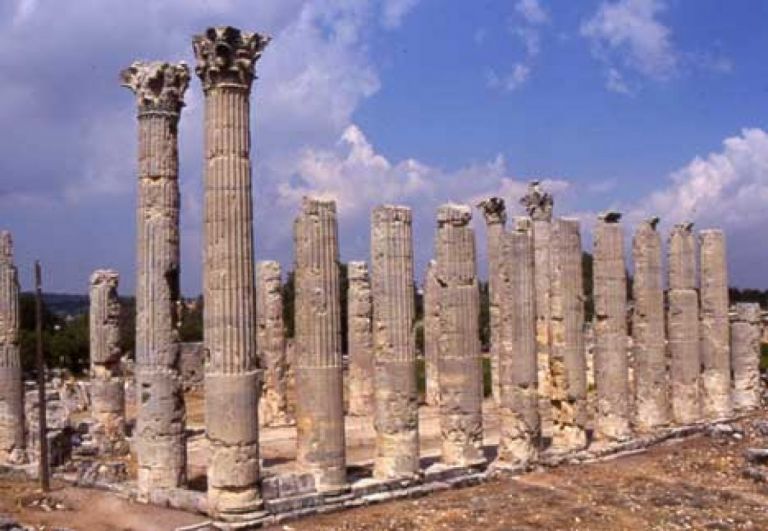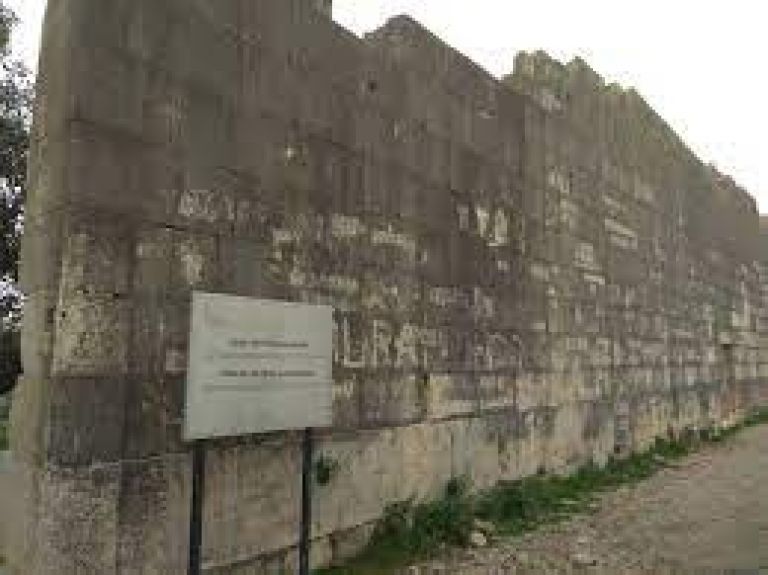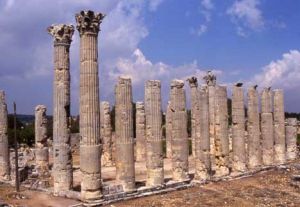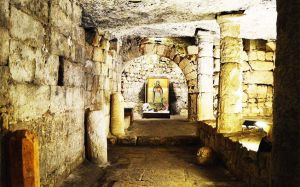The Temple of Zeus and the Church
The Temple of Zeus and the Church
The Temple of Zeus and the Church, It is one of the ideal options to witness the historical and cultural values of Mersin. Don't forget to add this historic building and its complex to your list for an unforgettable cultural itinerary in Mersin! Mersin's other must-see attractions The Roman Temple The castle of Silifke and ... The stone bridge . We suggest you check out our stops as well. If you want to know more about Mersin. What Can Be Done? Where Does It Stay? and ... Where's Yenir? You can also check out our pages.
About the Temple of Zeus and the Church
About the Temple of Zeus and the Church, The Temple of Zeus is located in Silifke County, Mersin Province. The temple M. The S. It was built in the 2nd century and destroyed in the 5th century. It was built in the 5th century and converted into a church in the 5th century with significant changes in its plan. Yy ⁇ da has been converted into a church with significant changes in its plan. The temple belongs to the Roman period. According to the story, locusts infest the crops of the people who live in the valley. The people ask for help from Apollo, the god of the sun and art. A temple is built to show their gratitude to Apollo for helping the people. There are those who claim that the temple was built in the name of Zeus. There are differences of opinion about the function of the temple. It is also known as the Temple of Jupiter. The structure, the outlines of which are clear today, has been severely damaged.
According to mythological stories, In the great struggle between Zeus and Typhon, Typhon dismembered the body of the chief god Zeus and threw it far away, imprisoning only his body in an underground pit of hell. But then the messenger god Hermes and Pan find Zeus' lost limbs and bring them back to save him.
Built to commemorate this event, the temple is decorated with stones containing the names of 130 religious and statesmen who served in the Hellenistic and Roman periods. Based on this information, it can be assumed that the temple was probably built in the Hellenistic or early Roman period. When Christianity came to the area, the temple was demolished and converted into a church.
This temple was used in three different periods as a symbol of Zeus' victory over the giant dragon Typhon. The stones on the eastern side of the northern side wall contain the names of 130 clergymen and statesmen who served in the Hellenistic and Roman periods.
In the light of this data, it can be assumed that the temple was built in the late Hellenistic or early Roman period. During the Christian era, it was completely demolished and converted into a church using its own stones. However, it is not known exactly when and for what purpose this church was built, but the earliest is dated to the 4th century. the fifth century at the latest. It dates back to the 19th century.
Where is the Temple of Zeus and the Church?
Where's the temple of Zeus and the church? The Temple of Zeus and the church are located in Silifke County, which is home to the historical and cultural riches of Mersin. Mersin, the Temple is located in the south of Mersin Island, which has a unique natural beauty and a rich history located in the south of the Mersin Strip.
How to Get to the Temple of Zeus and the Church
How do you get to the Temple of Zeus? The Temple of Zeus and the Church are 95 km from Mersin. To get to the field, you must first go to Silifke. Here are some commonly used ways to get to Silifke:
-
The public transport:
- The buses; You can get off at the market with the special Silifke buses that leave from Mersin bus station. The Temple of Zeus is an average of 22 kilometers from the center of the market.
- The plane; The nearest airport to the temple is Adana Shakirpaşa Airport, 185 km away. - The taxi: There are many taxis in Silifke. It is possible to go to taxi stops or use taxi applications to call a taxi. Taking a taxi to the Temple of Zeus can be a quick and convenient option.
- Special vehicle: If you rented a car in Mersin or have your own car, it is quite easy to get to the Temple of Zeus using GPS or maps. Silifke can be reached by following the sign in the city centre.
The Temple of Zeus and the Architectural Features of the Church
The architectural features of the Temple of Zeus and the Church:
- Cladding material of the structure: The structure is completely covered with sarcophagi and was used especially for religious ceremonies.
- Historical and cultural significance: The temple is considered an important structure within the ancient architecture of Mersin and is of great historical significance.
- The entrance floors: At the entrance of the temple, there is a two-story entrance with the name of the temple written on it.
- Style of construction: The temple is built in such a way that the central area is surrounded by arched monuments.
- Interior decoration: There are many reliefs and sculptures inside the structure. These works include a stela praising Zeus' father, Idas the Pilgrim, reliefs on Zeus' southern wall, and some statues made of red marble.
- Historical records include: The stones on the eastern side of the northern side wall are engraved with the names of 130 religious and statesmen who served in the Hellenistic and Roman periods.
- State of play: The Temple of Zeus is now in a dilapidated state and is not in use.
History and architectural features of the church:
- Conversion from Temple to Church: The Temple of Zeus was completely demolished during the Christian era and converted into a church using its own stones.
- The uncertainty of history: However, it is not known exactly when and for what purpose this church was built. But the earliest IV. the fifth century at the latest. It dates back to the 19th century.
The Temple of Zeus and Church Surroundings
Places to visit around the Temple of Zeus and the Church Some of them are:
- The castle of Silifke: Silifke Castle, located quite close to the Temple of Zeus, is a historic structure and offers beautiful views. By visiting the castle, you can both explore the historical fabric and observe the city from above.
- Atatürk Street: Atatürk Street, the main street of Silifke, is full of restaurants, cafes and shops. Here you can walk, taste local delicacies and shop.
- The Silifke Museum: The Silifke Museum, which exhibits artifacts from antiquity, is an interesting place for history and archaeology enthusiasts. You can visit the museum to better understand the historical context of the Temple of Zeus.
- The Caves of Heaven and Hell: Located to the east of Silifke, these caves are famous for their natural beauty and mystical atmosphere. The Cave of Hell is particularly noteworthy for its unique lake.
- The Longhorn Ancient City: Located near the Temple of Zeus, this ancient city contains remains from the Hellenistic and Roman periods. The ancient theater and walls are worth seeing.
- The Cave of Asthma: Located to the east of Silifke, this cave is famous for its slopes and cliffs. Exploring the cave is a great option for nature lovers.
- The Bright Beaches: Aydıncık, the coastal town of Silifke, is famous for its beautiful beaches. It is an ideal place for sunbathing, swimming, and water sports.
- The Maiden's Castle: The village of Silifke's Girl Castle is famous for its unique sea view and a historic castle. You can have a pleasant day by walking or boating to the castle.
These are just a few of the environmental attractions you can discover during your visit to the Temple of Zeus and the Church in Silifke. You can take more time to explore the beauty of Silifke, full of history, nature and sea.
Temple of Zeus and Church Entrance Fee
Temple of Zeus and Church entrance fee It's not there.
Hours of Visit to the Temple of Zeus and the Church
Visiting hours of the Temple of Zeus and the Church in the summer period (1 April to 1 October) 08.00-19.30-17. Admission is open every day of the week from 00 to 19.00, 08.00 in winter. 00, 08:30 to 17:00 in the winter. It is open every day of the week from 30 to 17.00. It's open every day of the week.







Değerlendirmeler